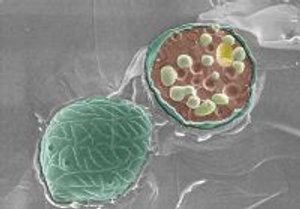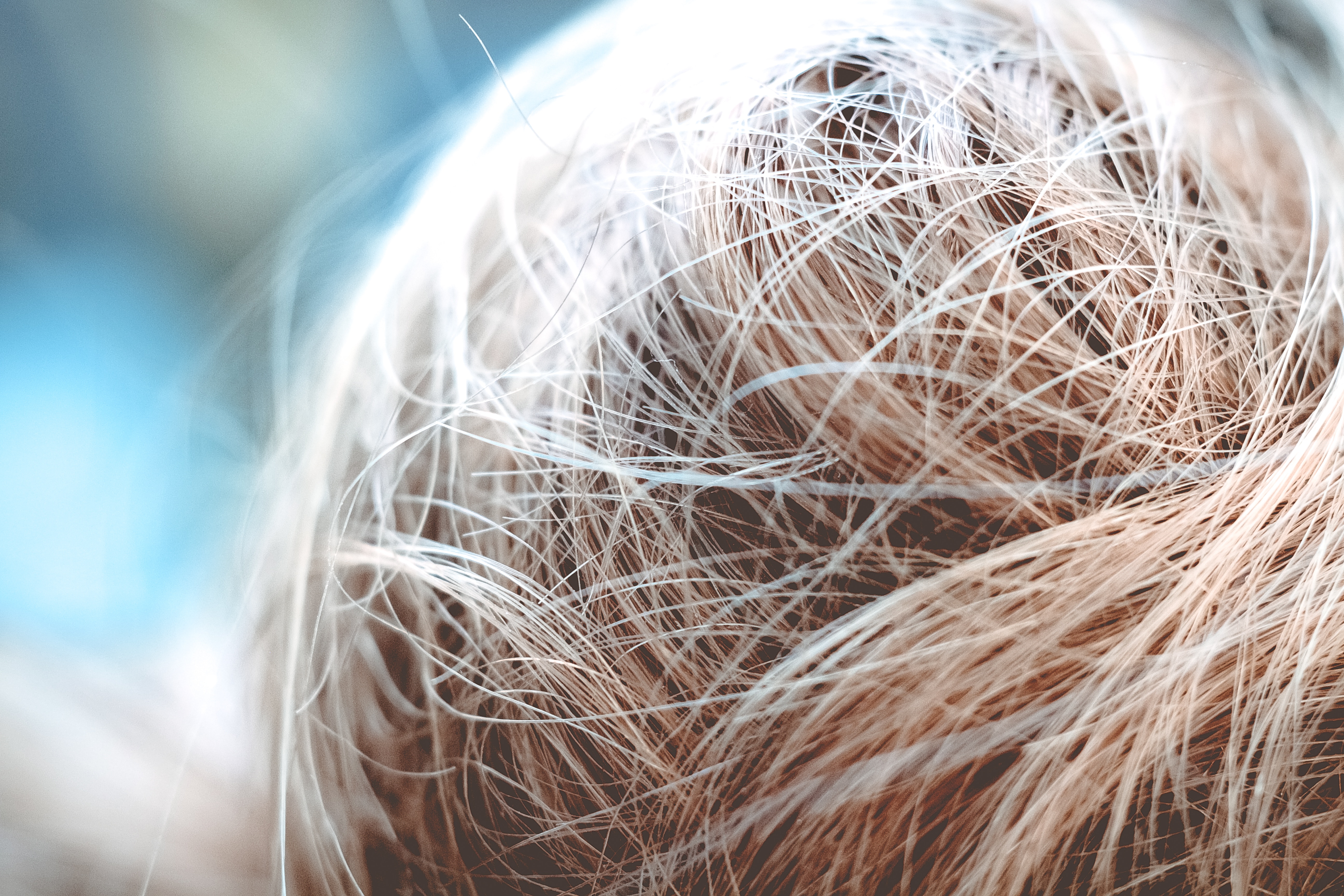Comprehensive research on dandruff has changed the way we look at the disease. The latest findings indicate that it may actually be caused by a fungus on the scalp.
TScientists from P&G Beauty & Grooming have successfully sequenced the complete genome for Malassezia globosa (M. globosa), a naturally occurring fungus responsible for the onset of dandruff and other skin conditions in humans. Results of the genome sequencing were published the online edition of Proceedings of the National Academy of Sciences (PNAS). Dandruff and seborrheic dermatitis affect more than 50 percent of the human population. Despite the role of Malassezia in these and other common skin diseases, including eczema, atopic dermatitis and psoriasis, little was known about the fungus at the molecular level until this study. In addition, understanding of Malassezia’s genetic make-up may help scientists reevaluate the parameters that have historically been used to classify fungal organisms.
Interestingly enough, this research has confirmed that dandruff is primarily a fungal problem. This goes against the typical advice currently given to dandruff sufferers. Many doctors will tell you that you need to wash your hair more often and remove the buildup. While not entirely untrue, as oil on the scalp is a food source for the fungi, washing more often with normal shampoo doesn’t fully correct the fungal problem.
On the other side, holistic health practitioners claim that dandruff is just a symptom of dry skin and over-washing. While over-washing can dry out and irritate your skin, it does not cause severe flaking and itching like true dandruff. So the next time your yoga buddy tells you to stop washing your hair or to saturate your scalp in oils, red flags should go up! As we’ll explain later, these types of fungi feed on oil. Letting your natural oils pileup on your head will not help. Adding oil to your scalp will exacerbate the dandruff. Even if you’re using a “natural” oil with anti-fungal properties, you’re still giving the fungus more food! Oils may temporarily mask the symptoms by matting the flakes down, but they will not cure dandruff.
The Cause of Dandruff
 The Malasezzia fungi is ultimately the cause of dandruff. Specifically Malasezzia globosa and Malasezzia restricta yeasts have been consistently found on the heads of dandruff sufferers. These fungal species excrete hydrolytic enzymes on your skin, which then join to your natural sebum. The fungi then eat this enzyme-sebum product, and later poop out irritating unsaturated fatty free acids. These fatty acids penetrate into the epidermis, cause irritation, and induce a flaking response.
The Malasezzia fungi is ultimately the cause of dandruff. Specifically Malasezzia globosa and Malasezzia restricta yeasts have been consistently found on the heads of dandruff sufferers. These fungal species excrete hydrolytic enzymes on your skin, which then join to your natural sebum. The fungi then eat this enzyme-sebum product, and later poop out irritating unsaturated fatty free acids. These fatty acids penetrate into the epidermis, cause irritation, and induce a flaking response.
So a fungus is gobbling up oil on your skin and then pooping all over your head. Your thank you present? Frosted flakes. Lovely.
The only way to stop dandruff is to kill the fungus. But before we can do that, we need to treat the symptom, and remove the existing buildup so we can penetrate the skin with anti-fungal ingredients.
With consistent application using the regimented approach below, you can get rid of dandruff for good—mostly. There seems to be a genetic reason that some people are more susceptible to dandruff than others, so even if you completely clear up in a few weeks, you may need to maintain your scalp more thoroughly on a regular basis.
Clear the Debris!
The first step is to clear some of the white buildup on your scalp. Although the flaking is a symptom, and not a cause, of dandruff, having too much buildup also acts as a shield for the fungus. Any fungus-fighting ingredients you place on your scalp can’t get to the fungus when they’re sheltered in a layer of dandruff. So we need to spend some time removing some of that buildup.
You will notice below that I recommend a brand-name shampoo. Although I’m a big fan of generics for many products, in dandruff shampoo the processing method matters. For example, salicylic acid is only a good exfoliative if it is available at a correct pH. Generic processors often skip these costlier details. For a problem like chronic dandruff, spend a few extra bucks to ensure you are using an active form of the primary ingredient.
You Will Need
- A brand-name exfoliative shampoo:
- MG 217 Medicated (coal tar)
- Neutrogena T-Gel (coal tar)
- Sebex (sulfur and saliyclic acid)
- Neutrogena T/Sal (salicylic acid)
- Everclean (salicylic acid)
- A hair dye bottle.
- A cheap comb that you don’t mind throwing out.
- Access to a shower or bathtub.
- Patience and perseverance!
These steps are best performed on a dry scalp. Because there is some waiting time involved, they will also be difficult to do during your shower routine.
Using the comb, thoroughly scrape every part of your dry scalp. The point is to mechnically scrape off as much residue as possible. Shake out the flakes onto a towel, and then rinse your head under running water.
Take your hair dye bottle and load it up with your dandruff shampoo. Be generous—you will be using a lot of liquid! Now part your straight down the middle and coat the part with shampoo. Make a new part. Coat that line of scalp with shampoo as well. Repeat this until your entire scalp is covered. It may take a while, and getting the back of your head is difficult—be prepared to do that section mostly by feel.
Once your head is saturated with liquid, take your fingers and really dig that shampoo into your scalp. Remember, dandruff is a scalp problem, not a hair problem. You do not need any of this stuff on your hair, but you do want every square inch of your scalp covered.
Wait for 30 minutes. This is crucial! These shampoos exfoliate using chemicals. By definition, chemical exfoliation takes time to work. Be patient.
Rinse thoroughly.
Do this everyday for 3-5 days. You may have to buy a few cheap combs and use a new one every day. It is very hard to get dandruff off a comb.
After 3-5 days, move onto the next step.
Fight the Fungus!
Fungus is ultimately the cause of your itchy, flaking scalp. Unless you eradicate the fungus, dandruff will always come back. Now that you’ve cleared off some of the buildup on your skin, the fungus-fighting ingredients in your dandruff shampoo have a better chance of working.
You Will Need
- Brand-name anti-fungal dandruff shampoo:
- Selsun Blue Medicated Maximum Strength (selenium sulfide)
- Head and Shoulders Clinical Strength (selenium sulfide)
- Head and Shoulders Extra Strength (pyrithione zinc)
- Nizoral (ketaconazole)
- A hair dye bottle.
- Access to a shower or bathtub.
- More patience!
Repeat the process you used with the exfoliative shampoo. Coat your scalp in sections with the hair dye bottle. Dig the shampoo into the skin with your fingernails.
Wait for 30 minutes. None of the shampoos are strong enough to nuke the fungus on your head right away. You must give them time to work.
Rinse thoroughly.
Repeat every day with the anti-fungal shampoo until the dandruff is completely eradicated, and then continue for one week afterward to prevent recurrence. Depending on how bad your buildup is, you may want to alternate the anti-fungal shampoo with the exfoliative shampoo.
Maintenance
Some of you may never have to worry about dandruff again. If you have an extra oily scalp or a lifelong problem with dandruff, you may find that some form of anti-dandruff maintenance is necessary. Always check the level of buildup in the shower, and scratch any off excess with your fingernails. Use an anti-fungal shampoo twice a week. Typically these two steps keeps long-term dandruff at bay.




